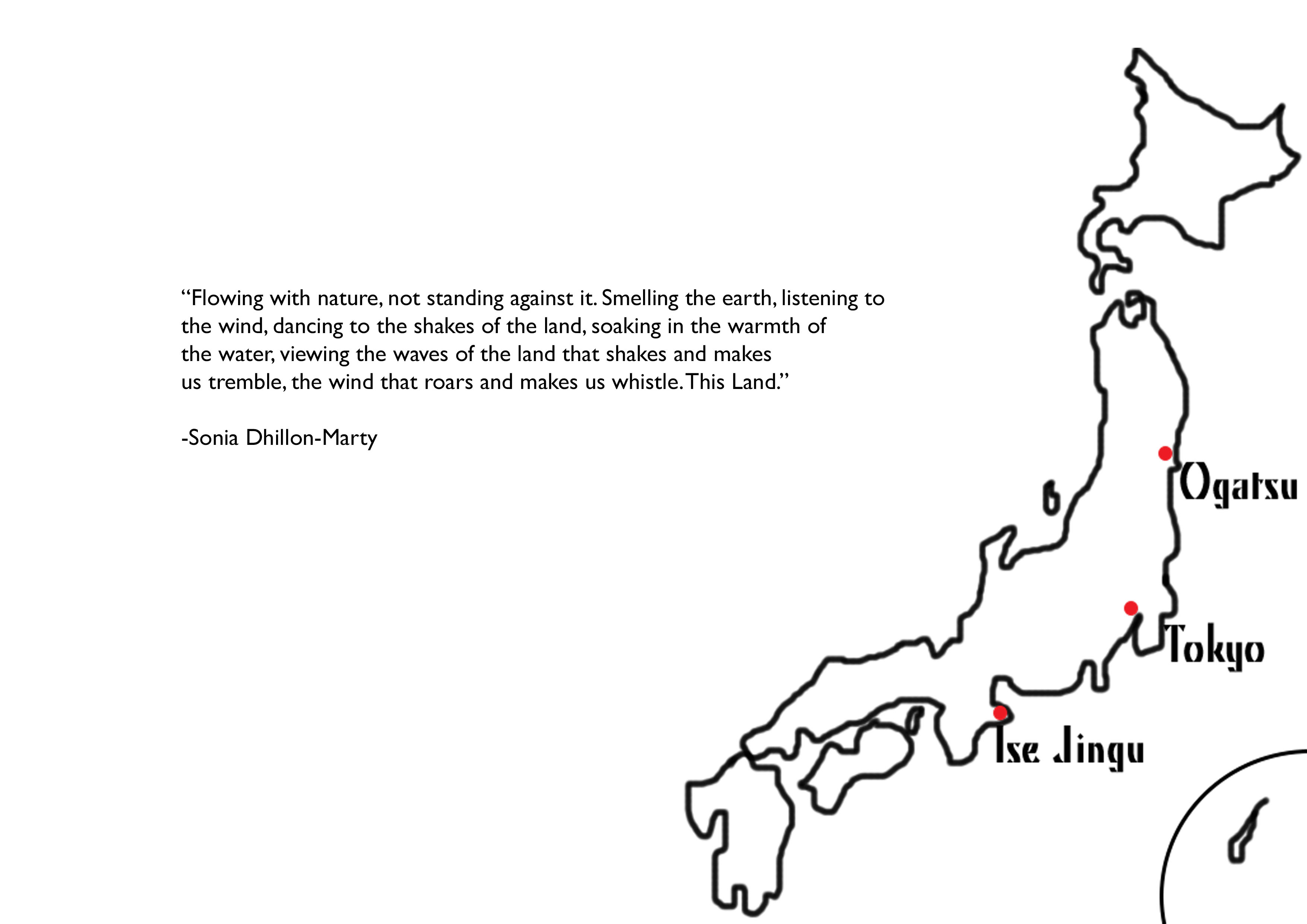Community Week 2013: Material Equilibrium
Dhillon Marty Hojoki (mobile pavilions).
Sonia Dhillon-Marty
VISION
The first annual Dhillon Marty Foundation Community Week will feature the concept of “Material Equilibrium”. Focusing on art, design, eco-economics and socio-environmental issues the participants will explore ways to live in harmony with a land of shakes, high waves, sprouting hot water and strong winds but also within specific local cultures. Spatial and cultural thinkers will imagine interventions based on craft, tradition, endurance and portability.
Dhillon Marty Hojoki is a concept inspired by Kamo no Chomei’s hut and the Japanese Mikoshi tradition. The traveling shrine offers a parallel to our vision of a traveling art platform. Ise Shrine, before it was given a permanent space, was a traveling shrine as well. The Foundation’s resident scholars will play the role of missionaries by initiating dialogues on many subjects of socio-ecological justice thus building awareness for sustainable living.
Flowing with nature, not standing against it. Smelling the earth, listening to the wind, dancing to the shakes of the land, soaking in the warmth of the water, viewing the waves of the land that shakes and makes us tremble, the wind that roars and makes us whistle. This Land.
Taking the inspiration from Ise shrine, the material and building techniques will be such that they lend to continuous renewal and are in equilibrium with the nature that provides the resources. Hojoki name is chosen to emphasis the rethinking our need for materials and the resources of our planet.
DESIGN CHALLENGE
A focal point of the week of discovery and discussion is the ‘Dhillon Marty Hojoki: Mobile Pavilions’. The challenge for the architects, designers, scholars and students participating in Material Equilibrium is to design a movable pavilion that will function as an artists’ studio and living environment, as well as a communication space and exploration vehicle.
We envision a pavilion or a network of pavilions being manned by two to four artists/cultural thinkers for up to three months at a time, traversing Japan from cities to towns to rural outposts. Creative works will be inspired by their travels and interacting with individuals and communities along the way. The Dhillon Marty Foundation will plan such itineraries with several stops concluding with a salon event in Tokyo. The collective works will be published in the Dhillon Marty Annual Year Book: “State Of The Community”. The first mobile pavilion journey will include Ogatsu as this is where we are also re-designing a school building as a case study during our Community Week. Thus providing an ongoing support in the rebuild of the area with our mobile artist program.
There will be a predefined schedule of departure and stops for the pavilions. These will be linked to small communities under the effects of depopulation and will focus on the re-evaluation and discovery of local products, crafts and intangible cultural treasures and natural wonders and resources. The works can include song, theatre, storytelling, films, photograph, development of materials or building techniques, new product designs, webcams, social media feeds, etc. The mobile pavilions can facilitate the transfer of agriculture know how and value of slow food through a pavilion farm test bed. The residency brief will define the itinerary and the local specifications for the scope of the work.
IMPACT
The brief will be designed to bring global artists and scholars through our residency program and explore the Japanese country side. The key aspect will be to create a dialogue between the remote villages of Japan and the visiting scholar’s country in addition to the global community at large, and value of food and agriculture to young urban habitants (“Nogyo Taiken”).
Such interaction not only brings better understanding between nations and people, but it will help to rejuvenate the Japanese country side. Northeast Japan was devastated by earthquake and tsunami in 2011, and many young people are leaving the countryside for a life in the city. A real time exchange through today’s technological tools will also help to revitalize back-to-nature exploration. The intent is to build romantic notion of agro tourism through artists’ works presenting places that they will visit during their residency. Leading up to the 2020 Olympics in Tokyo, such exchanges will inform the international guests of the Olympics about the hidden cultural and natural treasures of Japanese countryside, thus revitalizing the economy.
Japan already has a couple of spatially focused but periodic art events that aim at creating this momentum and rejuvenate the countryside-the one in Niigata and the other in Naoshima. We intend to enhance the interaction through time intensive and spatially dispersed activities. As these will be continuous projects -not periodic- but the place will be fluctuating like a portable shrine. Hence the idea of wandering nomadic pavilions. So our equation is: space intensive + time extensive <=as opposed to=> space extensive + time extensive.
The objective of such residency is to help create happy and healthy global community. The Dhillon Marty Hojokis will be the real examples of material equilibrium.

